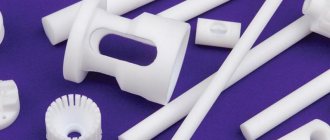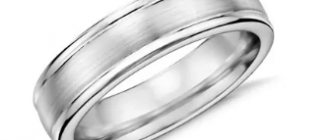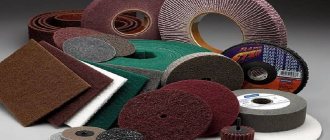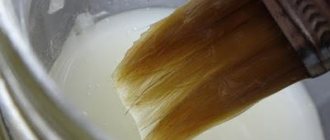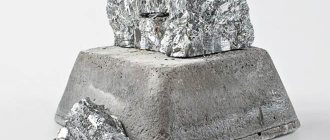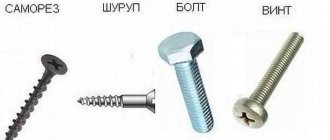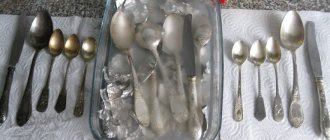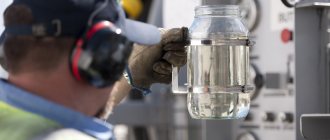In the process of anionic polymerization of aminocaproic acid or caprolactam, caprolon - a structural polymer. The process is carried out by introducing activators and alkaline catalysts. The company produces blanks in the form of regular and graphite rods, sheets of different thicknesses - from 5-10 mm to 50-60 mm. The material has different overall dimensions and batch sizes also differ. Fluoroplastic is used in industrial production by mechanical processing of workpieces.
What is caprolon?
The artificially created structural material is an elastic polymer of a white-yellowish color. The common polycaproamide or polyamide 6 is odorless. Dense plastic, unique in strength, cannot be compared with household plastic, since the material has a low coefficient of friction and increased hardness.
The synthetic material is obtained by low-temperature polymerization of aminocaproic acid. Caprolon is distinguished by a narrow range when changing state - from solid to liquid.
- The temperature is raised above 100 °C.
- In amide compounds of polymer chains, hydrogen bonds are gradually destroyed.
- There is a transformation of macromolecules from a crystalline form to an amorphous one.
- The mass becomes viscous.
- After transition to a liquid state, fusion occurs into a single structure of increased strength.
Application area
Characteristics, properties and application of different types of fluoroplastic
Good strength and dielectric characteristics, wear resistance and low cost make the material in demand in many industries. It is most widespread in the following industries:
- Electrical engineering. Here its dielectric properties are most in demand. Polyamide is used to make insulating cable sheaths and protective casings for electrical appliances operating outdoors. Resistance to chemicals and diluted alkalis allows the material to be used in contact with electrolytes.
- Shipbuilding and mechanical engineering. Due to its low specific density, polyamide can significantly lighten structures and make them more repairable.
- Food equipment. Separators, screws, bushings, rollers, cutting boards and other parts of the production cycle that come into direct contact with food products are manufactured.
Types of engineering polymer
The polymerization process in the production of caprolon takes place using different technologies - certain activators and alkaline catalysts are introduced, so the result is six types of finished product with certain properties and purposes. Depending on the resulting structure of the material, the following types of products are distinguished:
- grade “A” – no pores are allowed on the cross-section of the sample. A high-density blank - caprolon - is used in the aircraft industry, where parts made from technological blanks are subjected to dynamic loads. The material has low weight, high strength;
- grade “B” assumes the presence of pores no larger than 1.5 mm. Spare parts for industrial equipment, machinery, vehicles, machine tools are cut from rods and sheets of this brand;
- The MG brand includes graphite in the antifriction composition - a modification of the blanks is produced in black. Parts made from the “MG” material are more expensive, but are superior in strength to other brands of caprolon;
- “MDM” brand is modified with molybdenum disulfide to impart dielectric properties to the material. Parts made from ultra-strong dielectric are used at gas processing and gas production enterprises;
- caprolon-42 – the modified grade is filled with graphite;
- Kaprolon-4-15 - the composition is used for the production of blanks with a flowing static charge and, following the example of the Kaprolon-42 brand, is filled with graphite.
According to the production method, the following types are distinguished:
- injection molding;
- heat-resistant with a heating limit of up to 259 °C;
- food;
- with the addition of solid lubricant;
- with fiberglass;
- produced by an extrusion process;
- with introduced polyethylene.
Less expensive, but more reliable, production is by casting. We obtain durable, wear-resistant parts for the industrial automotive industry, machine tools, and equipment. Together with lubricant, polymer spare parts in industrial installations demonstrate the low coefficient of friction of caprolon, reduce noise, and increase service life. The most common forms of release, accepted by technical specifications, are blanks in the form of rods, blocks, sheets, which differ in overall dimensions and weight of one batch.
Production of polyamide material
Caprovinil appeared on the consumer market more than 30 years ago. The modern formulation for the production of polyamide 6 (PA-6) makes it possible to produce lightweight parts whose service life, compared to metal products, is more than twice as long. The main property of a molecular chemistry product is:
- high wear resistance under friction conditions;
- lack of acoustic effect;
- ease of processing;
- reduction of production labor costs;
- economic component of the production cycle.
Multifunctional structural polycaproamide for antifriction purposes is produced in the form of a block, rod (diameter 6−500 mm, length 200−1200 mm), and granules. Sheet caprolon is made with a thickness of 6-250 mm with dimensions of 500 x 700 mm, 1,000 x 1,000 mm, 1,000 x 2,000 mm, weighing 11.7-49.3 kg.
From the manufacturer's warehouse you can always buy a raphyte-filled or oil-filled product for universal use, as well as finished products for electrical, pneumatic and manual equipment. The non-toxic material can be used to produce products used in the food and medical industries.
Characteristics
The material is an absolute dielectric, as indicated by the following indicators:
- electrical strength is presented in the range of 20-35 kV/mm;
- at a frequency of 10 MHz, the dielectric constant is 3.0-3.3;
- specific volume and surface electrical resistivity are respectively in the following ranges 2*1014 – 2*1017 Ohm*m and 1*1010 – 3.5*1015 Ohm;
- the dielectric loss tangent, provided measurements are taken at a frequency of 10 MHz, is 0.015-0.025.
It is difficult to imagine what is better than caprolon in terms of the following physical and chemical characteristics:
- The melting point is 215-235 °C, and the operating range does not exceed -40 °C to +170 °C.
- The structure density ranges from 1.15-1.16 g/cm3.
- The material has the lowest water absorption coefficient of up to 1.2% and wear rate of 1.1-1.9 according to GOST 11629 Im10-6 g/m.
- The Brinell hardness coefficient is up to 190 MPa, while abrasive wear tends to zero and amounts to 0.055 g. GOST 11629 indicates that the coefficient of friction for steel is 0.15-0.3.
Caprolon rods and sheets are used to make parts that are subjected to compression, tension, shock, mechanical and dynamic loads, high and low temperatures, so the polymer receives the following characteristics during production:
- according to GOST 11262, caprolon has a breaking tensile stress limit of up to 90 MPa, but if a rupture occurs, then the relative elongation according to the same GOST will be equal to 14%;
- impact strength is measured according to Charpy - a test sample with a sharp cut shows up to 100 kJ/m2;
- modulus of elasticity 2300 MPa;
- when testing the deflection of a 1.5 cm thick plate, it was found that the sample has a bending stress of 80 MPa;
- at 6% strain on the sample, the compressive stress reaches 100 MPa.
These and other parameters make the material indispensable in many industries.
Areas of use
Caprolon is a multifunctional structural grade plastic with anti-friction properties. Thanks to the unique ratio of low cost of production, a set of physical and mechanical properties and environmental safety, this material has found application in many industrial sectors. The most important of them should be noted:
- Shipbuilding.
- Gold, coal and mining industries.
- Oil refining industry.
- Metallurgy.
- Food industry.
The word “block” in the name “PA-6 block”
- this is a term from the 60s of the last century, when caprolon was obtained
only in the form of rectangular blocks
.
The blocks were cut into small pieces, and then the parts were sharpened. To produce small parts (for example, bushings), up to 90% of the block was thrown into chips
.
And today, some enterprises store blocks from previous decades of production, fearing to send them into production, because... As a result of the primitive technology for producing caprolon, these blocks have internal stresses
and tear when trying to cut them into blanks.
Analogs - external differences between polymers
The closest analogue of a structural polymer in composition is an environmentally friendly fluorine-containing polymer. In many cases, caprolon and fluoroplastic are interchangeable materials, but there are differences:
- In terms of wear resistance, caprolon is ahead of fluoropolymers.
- Fluoroplastic has a dense, uniform structure and boiling white color. Caprolon has a “warm” creamy shade of coffee foam.
- According to tactile sensations, the fluorine-containing material is slippery and smooth, reminiscent of soap, and the second sample is smooth, slightly rough.
- Caprolon is lighter and cheaper than fluorine-containing polymer material.
- The surface of the fluoropolymer is scratched and leaves a mark from pressure. Caprolon cannot be scratched, pressed, or changed in shape.
- If, for comparison, you knock on a workpiece or part, the fluoroplastic muffles the sound, while the other structural sample rings.
Benefits of caprolon
Block polymer is used to replace parts made of non-ferrous metals in friction units, since caprolon is distinguished by its properties of special strength and wear resistance:
Mechanical strength
Ratings indicate exceptional impact, tensile, and deformation resistance. The polymer material is distinguished by parameters close to metals, therefore caprolon is used in the production of equipment, aircraft construction and the automotive industry.
Long service life
Long-term use does not affect the degree of wear. Thanks to the spraying of graphite dust, parts made of rods containing graphite and plates can operate without lubrication without increasing the noise level. Unique physical and chemical properties allow it to work for decades without visible deformation.
Dielectric properties
Polymers are not conductors, therefore they serve as an excellent material for insulating wires and components with high voltage and current. Structural polyamide is used in the energy and electrical industries.
Low coefficient of friction
- Devices, mechanisms, equipment operate silently if parts made of caprolon are used, the characteristics of which imply low abrasive wear and almost zero wear rate.
- The friction units connected by parts made of polymer based on caprolactam and with the addition of graphite operate successfully without lubrication.
- The material shows wear of 0.1 mm at 1000 hours of operation in the assembly connection and friction against steel or bronze.
Chemical resistance
- Polyamide is considered an environmentally friendly material.
- The absence of metal impurities in the structure guarantees the absence of corrosion after a long service life. Parts made of caprolon can work in saline solutions.
- The polymer does not react to hydrocarbons, alkalis, alcohols, oils, weak acids, ethers, ketones.
- Dissolved in acetic and formic acid, phenols, cresols, and inorganic acid concentrates.
High quality and low prices of caprolon
If we compare the cost of production of spare parts, parts made of caprolon, analogues made of non-ferrous metals cost 10-12 times more.
Light weight and high density
Bushings, bearings, liners, rings, flanges and other components are light in weight, but not inferior in density and reliability. As a result, the mechanism becomes many times lighter and stronger.
Safety
One of the important safety properties of caprolon is that it differs from plastics in that when rubbed and heated, the material does not smoke or melt, since the melting point is 220 °C. Non-toxic - does not release chemically harmful substances into the environment and does not harm human health. At temperatures above 300 °C, the material begins to decompose and releases ammonia and carbon oxides.
Ftoroplast-4
Fluoroplast-4 – polytetrafluoroethylene (PTFE) – is a product of tetrafluoroethylene polymerization.
Fluoroplast-4 is a high-molecular crystallized polymer - a unique material that has such valuable properties as high chemical resistance and heat resistance, good anti-friction and dielectric qualities.
Application of fluoroplastic
Due to its high heat, frost and chemical resistance, anti-friction, anti-adhesive and exceptional dielectric properties, fluoroplastic is considered a high-tech plastic, which is widely used:
As an anti-corrosion material, fluoroplastic is used in the chemical industry for the manufacture of apparatus, heat exchangers, pumps, pipes, valves, facing tiles, stuffing box packings, etc. The use of fluoroplastic 4 in chemical apparatus as pipes, seals, and gaskets contributes to the production of products of a high degree of purity; as a dielectric - fluoroplastic 4 is used in electrical engineering and electronics; as a material for the manufacture of seals and sliding bearings - in mechanical engineering, in pure and filled form, fluoroplastic is used for the manufacture of machine parts and apparatus, bearings operating without lubrication in corrosive environments, in the form of seals in compressors, cranes and other equipment; in the production of adhesives and dyes - to protect equipment from contamination; fluoroplastic is also used in the food industry (shaft lining, mold coating, equipment sealing); fluoroplastic is also used in medicine * prostheses and transplants, containers, prosthetic holders, etc.).
